Megapicus hoematogaster + validus
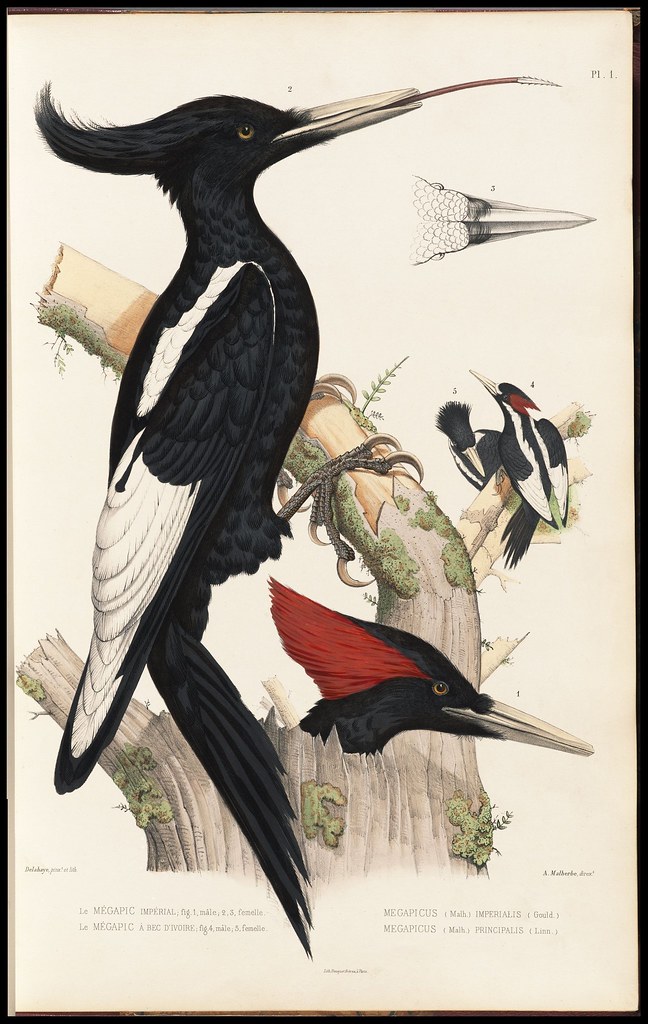
Megapicus imperialis + principalis
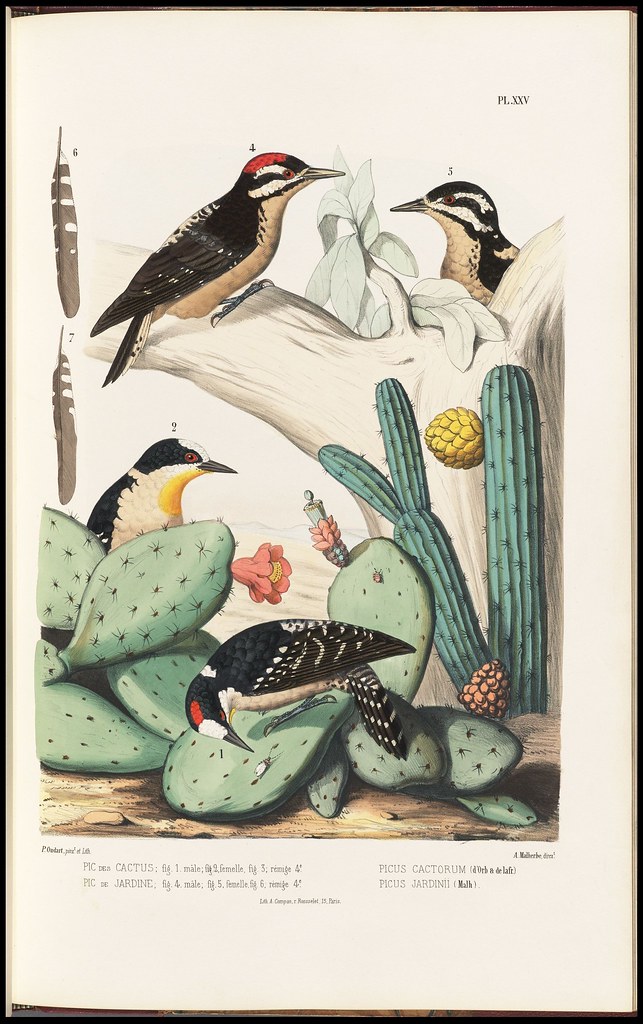
Picus cactorum + jardinii
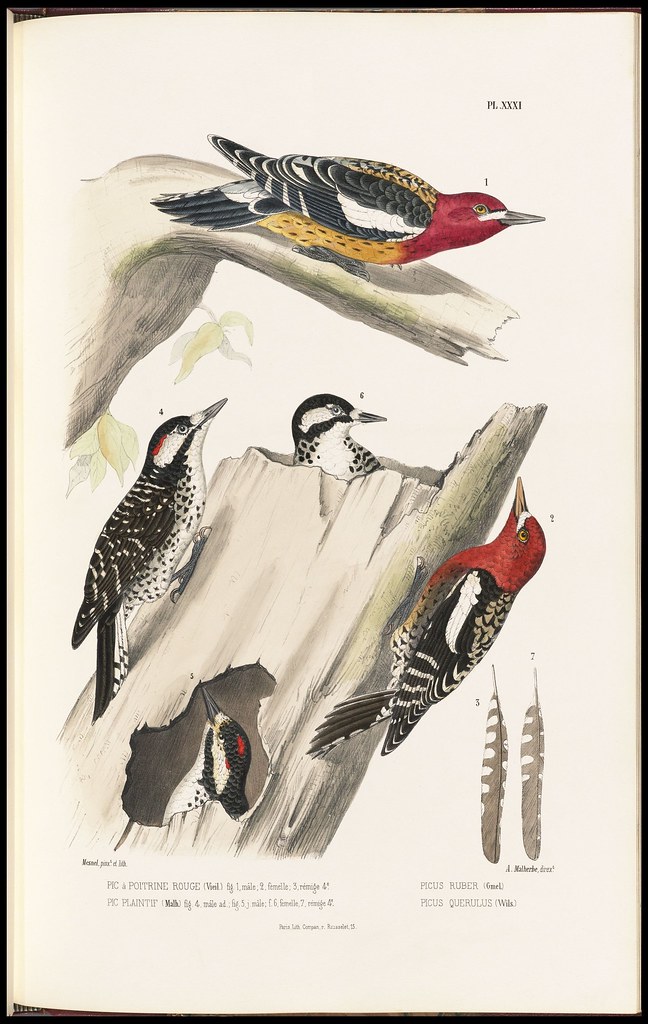
Picus ruber + querulus
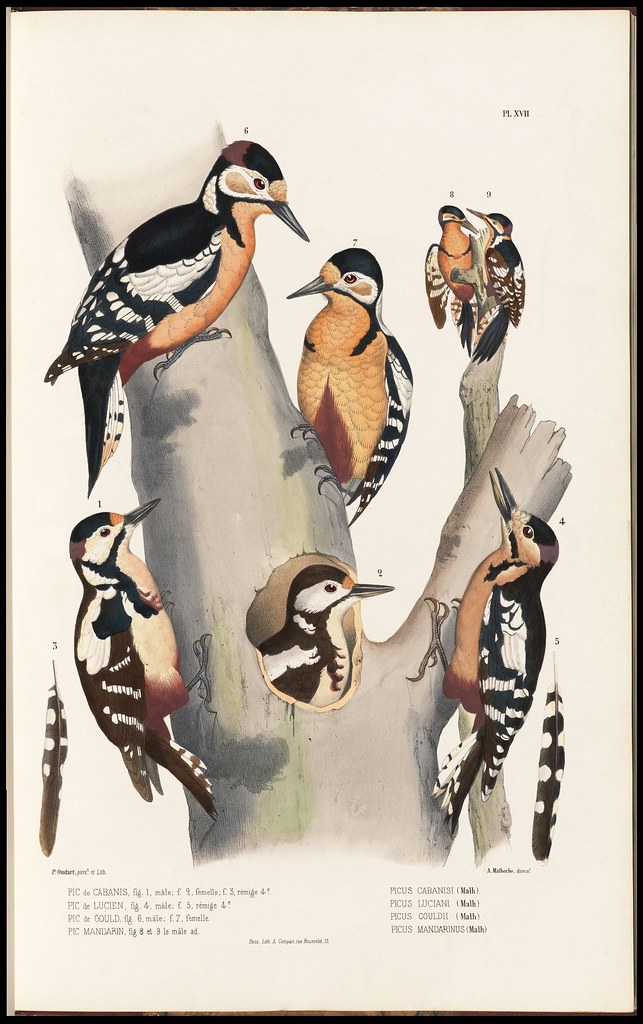
Picus cabanisi + luciani + couldii + mandarinus

Picus lueconotus + uralensis + cathphorius

Dryocopus funebris + gutturalis
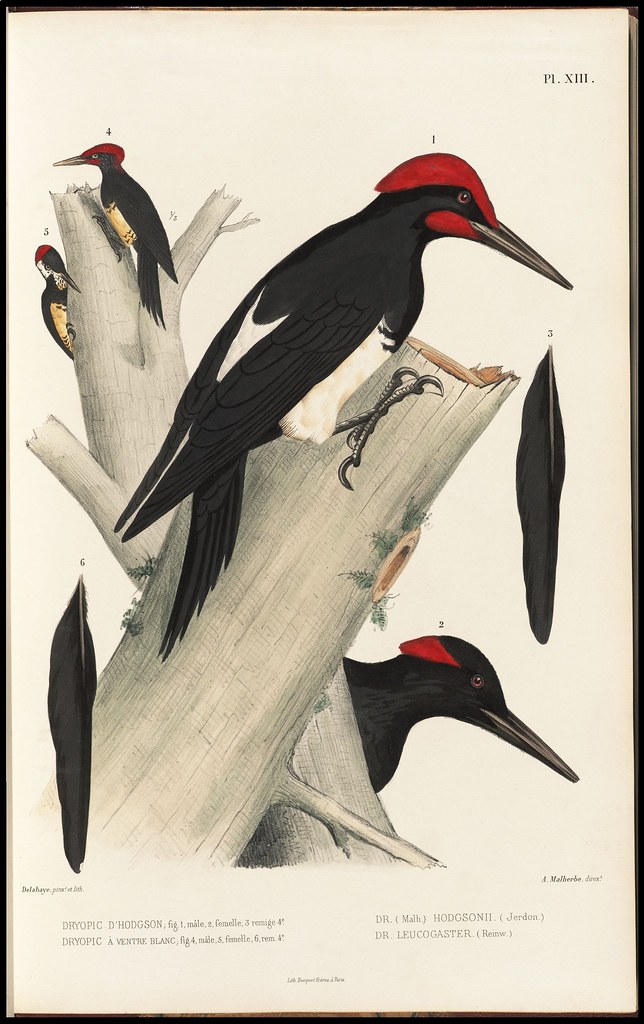
Dryocopus hodgsonii + leucogaster
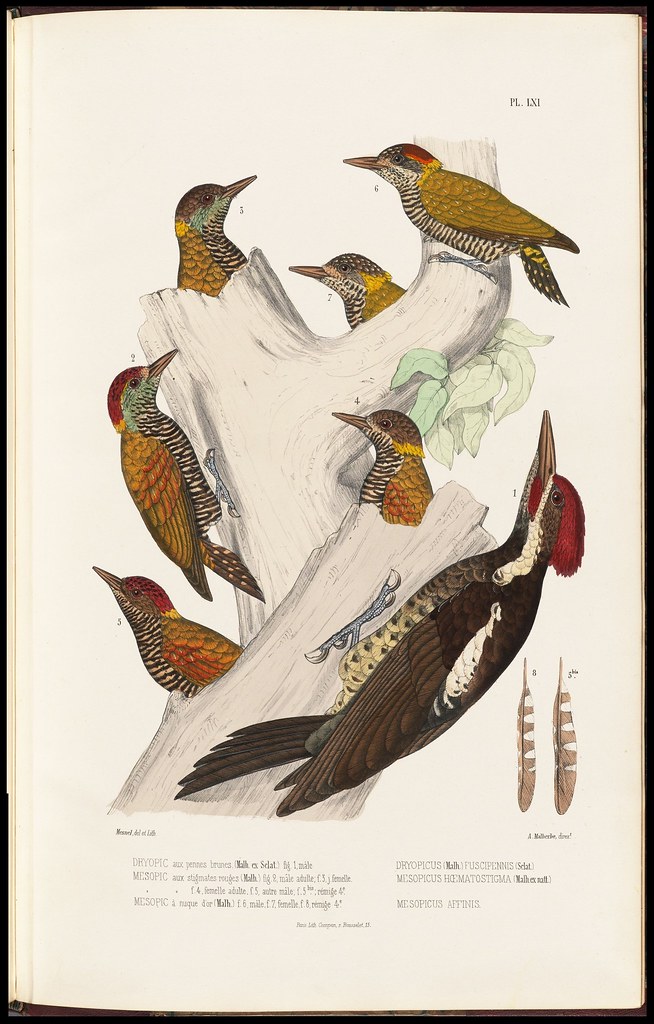
Dryopicus fuscipiennis + Mesopicus hoematostigma
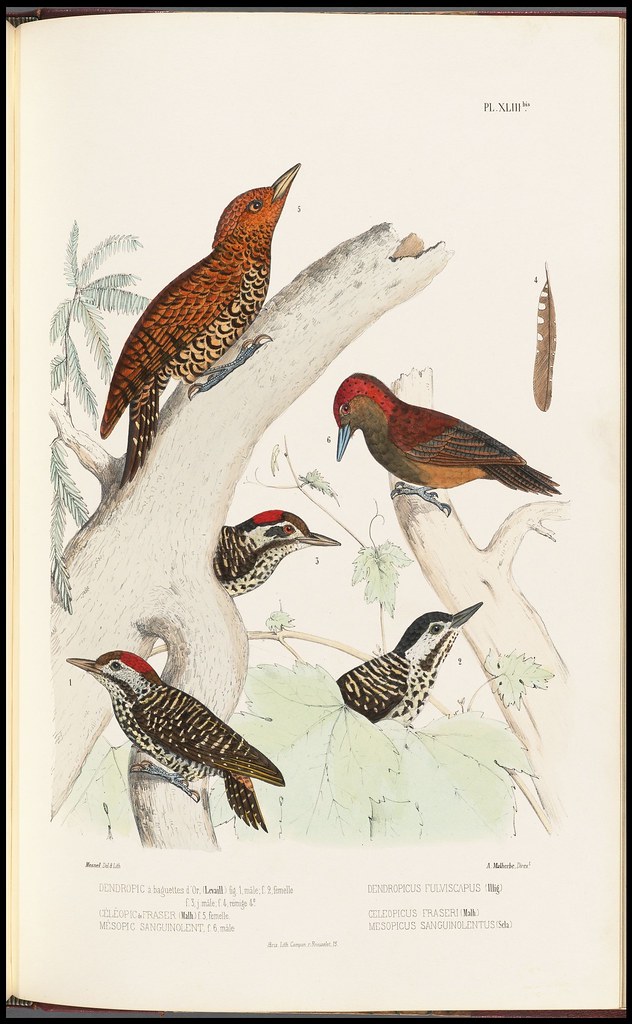
Dendropicus fulviscapus + Celepicus fraseri + Mesopicus sanguinolentus
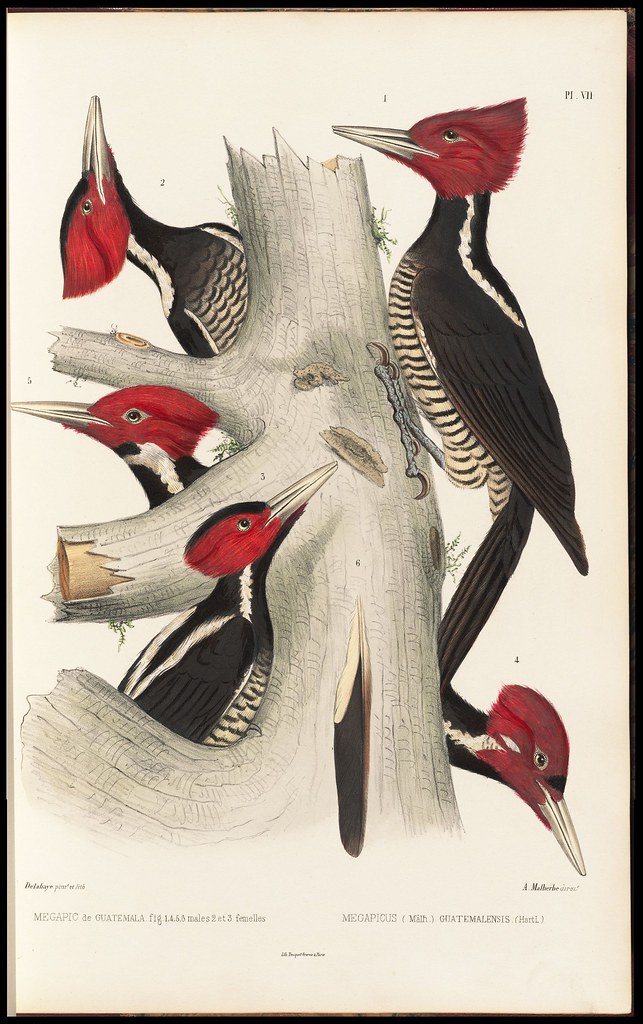
Megapicus guatemalensis

Picus auritus + meniscus + otarius + sclateri
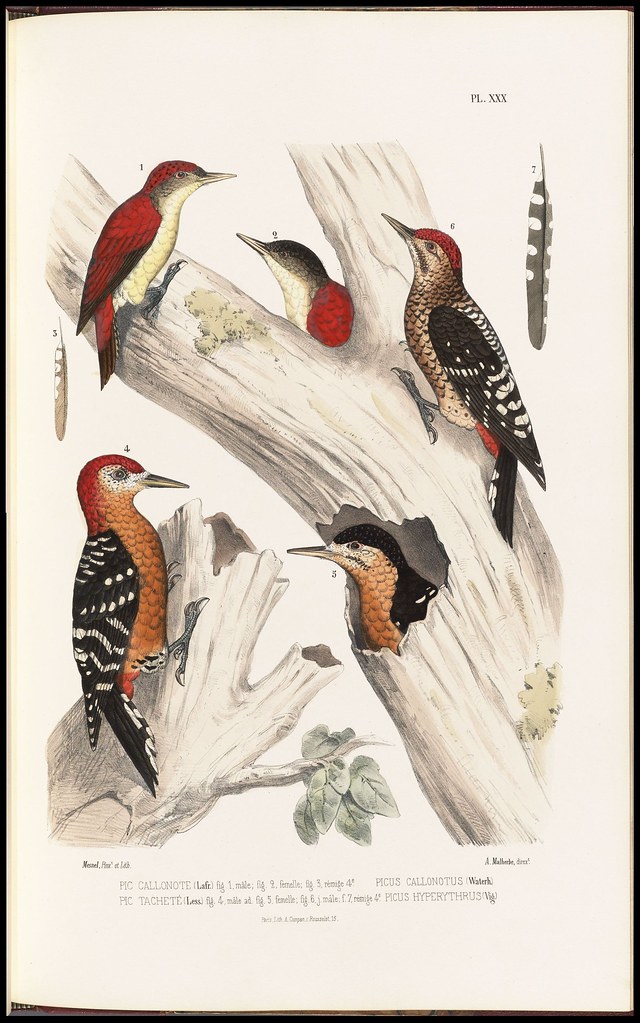
Picus callonotus + hyperythrus
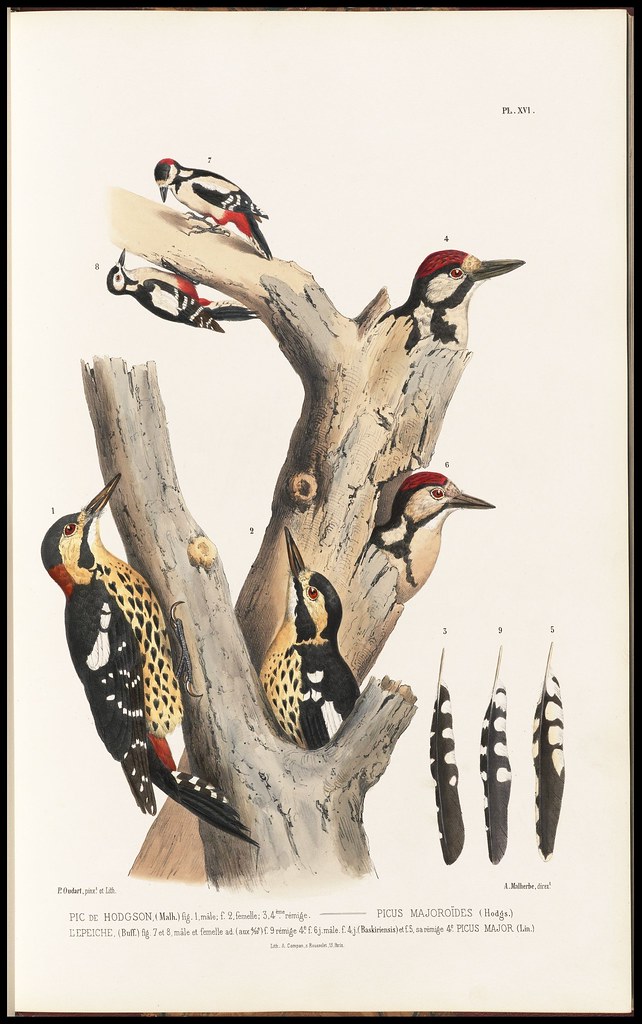
Picus majoroides et al.
[click through to enlarged versions; all images - except the two details - were spliced
together from screencaps; minor background blemishes were removed from all illustrations]
together from screencaps; minor background blemishes were removed from all illustrations]
Alfred Malherbe (1804-1866) was a French lawyer and judicial officer with a passion for natural history and a particular fondness for birds, which he collected from all over Europe. He was the president of his local natural history society in the Lorraine region of NE France and director of the museum in Metz for the last twenty years of his life.
In the 1840s and 1850s, Malherbe published a number of books on Algerian and Sicilian birds and contributed articles to ornithological journals, including papers on newly discovered species in the Picidae family. This family (Order Piciformes) consists of piculets, sapsuckers, wrynecks and - of course - woodpeckers, which make up the bulk of the group.
Typically, woodpeckers are tree-dwellers and possess short legs and strong [zygodactyl] feet that work in concert with stiffened tail feathers so that the birds can perch upright and move vertically on the sides of trees. Their short, straight, chisel-like beaks are efficient for drilling and drumming on the tree trunks and they have reinforced skulls to withstand the constant pecking, as well as long, barbed tongues to grab and extract insects and larvae from bore holes in the trees.
From the distribution map below, you can see that woodpeckers are only missing from Australasia and the poles. This may help to explain why it wasn't until I was an adult that I discovered that woodpeckers weren't just imaginary cartoon characters.
[I'm still not sure about roadrunners]

Alfred Malherbe's magnum opus - on woodpeckers - was released in four volumes between 1859 and 1862. The two text volumes outline the physical characteristics and classification history for more than 200 species of the Picidae family, half of which were discovered by Malherbe or first described in his detailed publication. The illustration volumes feature more than 120 vibrant, hand-painted lithographs produced by C Delahaye, A Mesnel, and P Oudart under specific directions from Malherbe.
As far as I can tell, it remains the most comprehensive series ever published on woodpeckers and Malherbe describes every known species in the Picidae family, although one presumes that some of the species names captioned above have changed in the last 150 years.
About one hundred or so copies of the first edition were produced, making Malherbe's 'Monographie des Picidées' a very rare treasure. I noted, in passing, one complete series that sold for €38,000 a couple of years ago.
'Monographie des Picidées' is available from Harvard University Library {volumes II + III}.
- The Internet Bird Collection site has photos and video of most woodpecker species.
- Wikipedia: woodpecker | piciformes
- Beyond these references the literature tends to get very specialised.
- Woodpecker photos from the Animal Diversity Web.
- UPDATE (July 2012): the books are now available via Botanicus (not sure if they're from Harvard or are separate copies).

Full series title: 'Monographie des picidées, ou Histoire naturelle des picidés, picumninés, yuncinés ou torcols comprenant dans la premiére partie, l'origine mythologique, les mœurs, les migrations, l'anatomie, la physiologie, la répartition géographique, les divers systémes de classification de ces oiseaux grimpeurs zygodactyles, ainsi qu'un dictionnaire alphabétique des auteurs et des ouvrages cités par abréviation; dans la deuxiéme partie, la synonymie, la description en latin et en français, l'histoire de chaque espéce, ainsi qu'un dictionnaire alphabétique et synonymique latin de toutes les espéces'

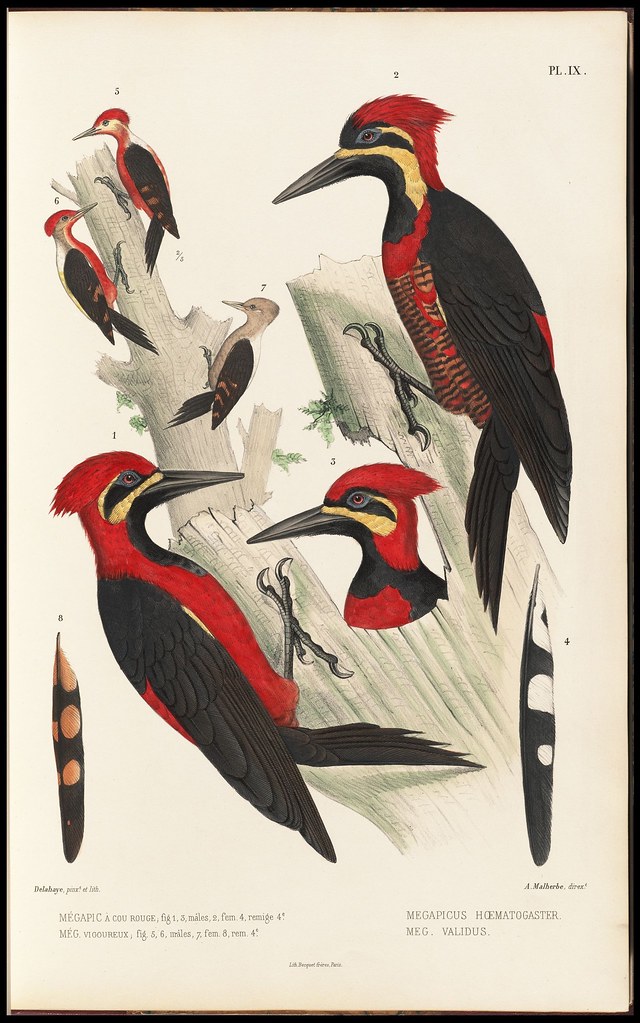



















5 comments :
wow, yummy lovely post. Thanks.
Ohhh, fabulously wonderful! Beautiful creatures!
Just wanted to let you know I keep coming back to your blog. I am a visual artist, and if you look closely in the video below around 0:50 you'll see some video projections of octopus, turtles and other sea creatures that were created from original illustrations that I found on your blog last year.
http://vimeo.com/15293814
I am very intrigued by the woodpeckers here so expect them to appear in some video also...
Taa!
Wow Vibber, that's some great projection quality. Lighting-tech has come a long way.
wow, your blog is really amazing x
Post a Comment
Comments are all moderated so don't waste your time spamming: they will never show up.
If you include ANY links that aren't pertinent to the blog post or discussion they will be deleted and a rash will break out in your underwear.
Also: please play the ball and not the person.
Note: only a member of this blog may post a comment.